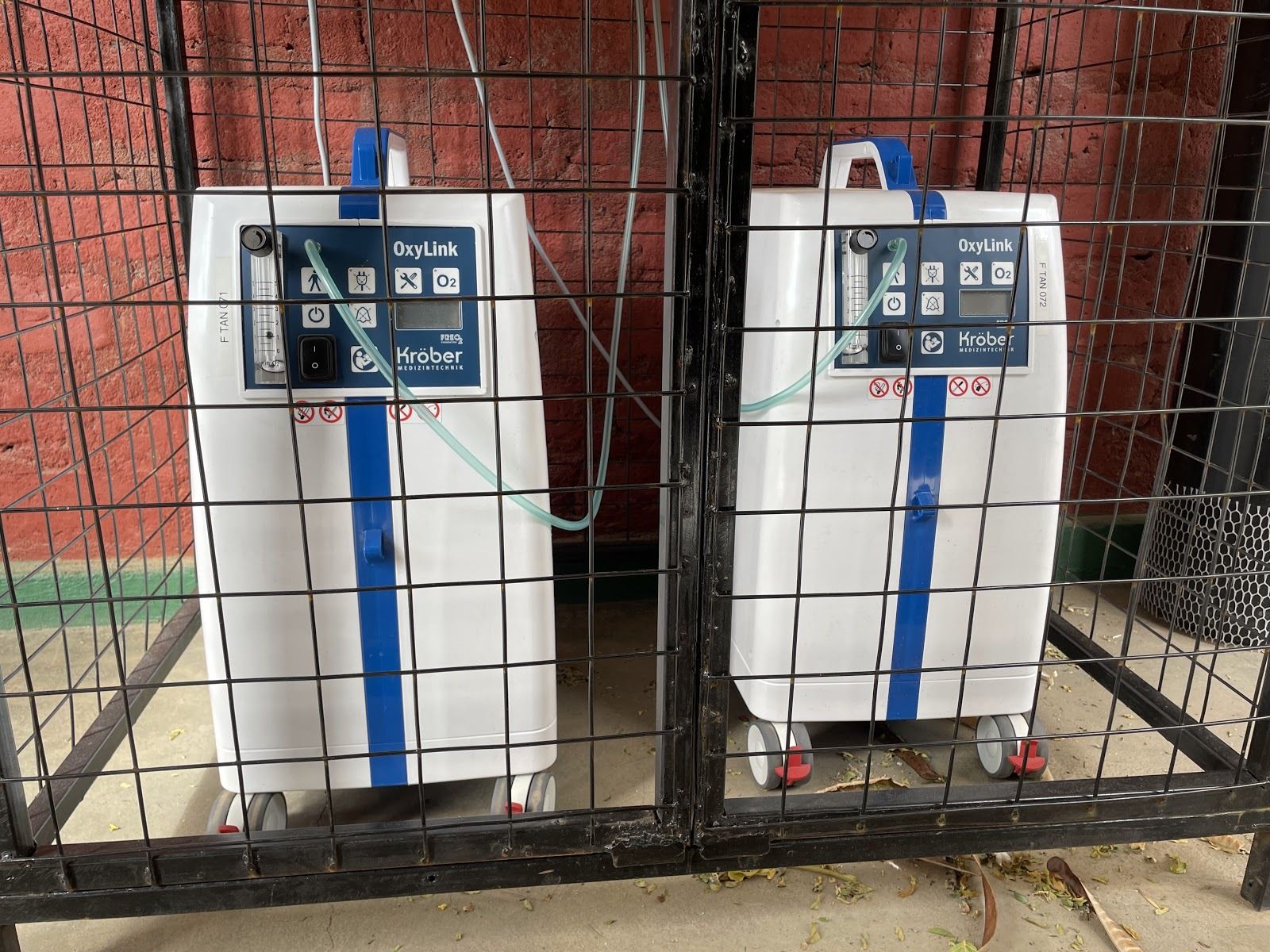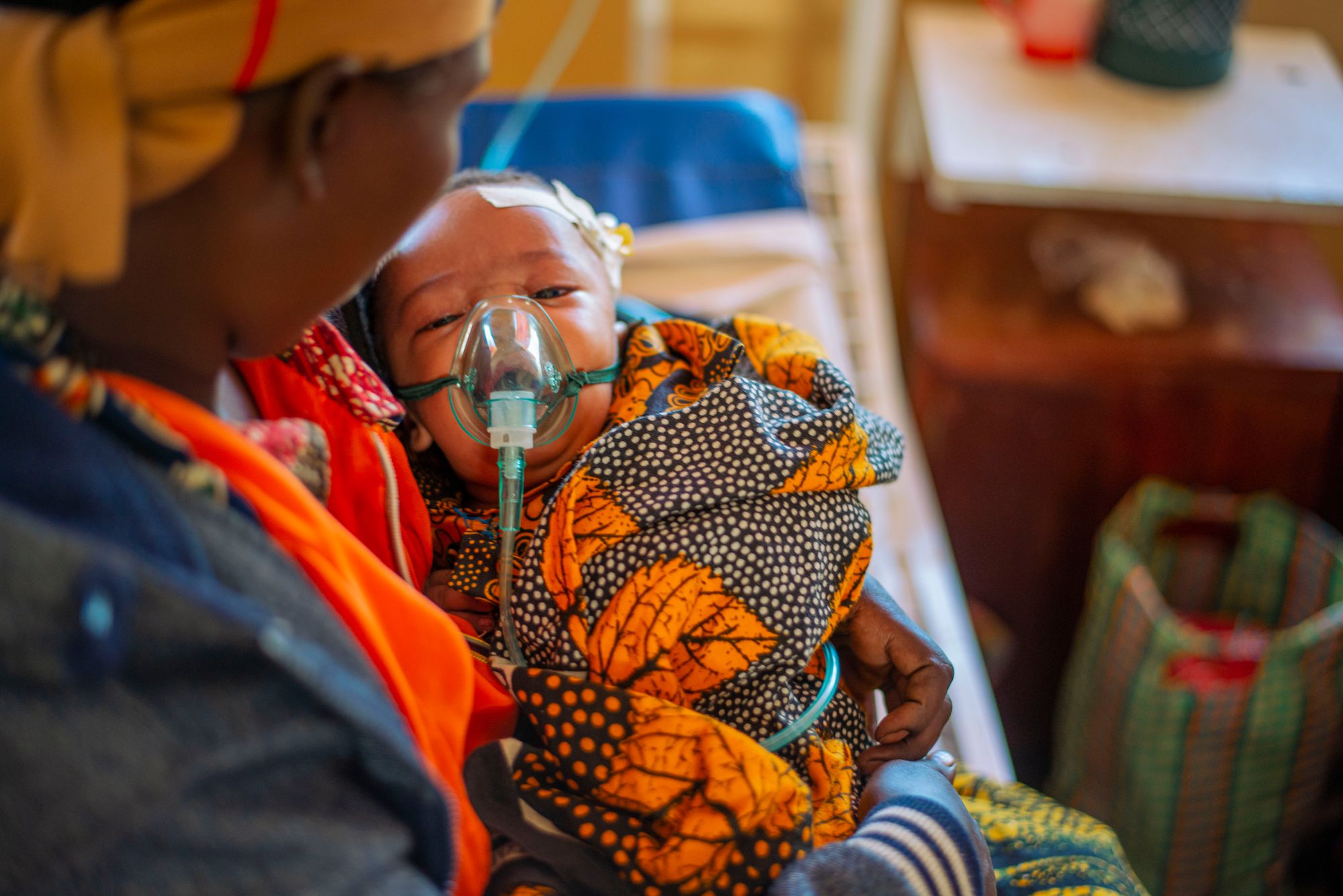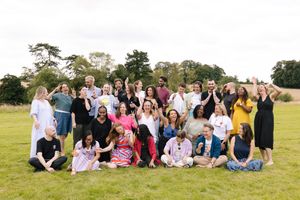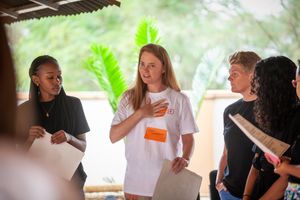
This is part of a series that focuses on how our Venturing practice takes a systemic and relational approach to designing funds, managing portfolios, and growing ideas. Across four blogs we'll be showing how that approach has played out in the real world with stories from our work.
Hospitals and clinics need a reliable supply of oxygen. Patients, whether they are suffering from pneumonia, or hypoxemia, or COVID, need oxygen to recover. But, particularly in low and middle income settings, that reliable supply isn’t always available.
Why?
Plumbing an oxygen supply (as you would with water) is expensive, and impossible in rural areas. Oxygen cylinders are also expensive, heavy, and require transportation and storage.
Enter: the oxygen concentrator.
Oxygen concentrators take the air around us, remove nitrogen and provide oxygen enriched gas. They make oxygen access cheaper, and remove supply chain pressures.

Oxygen concentrators are proven to save lives in low-resource settings when implemented properly, but they haven’t yet achieved widespread impact at scale. For instance, 1 million deaths occur every year due to hypoxemia in low and middle income countries, many of which are preventable.
Why?
To answer that, Brink (in partnership with DT Global and with funding from the UK Foreign, Commonwealth & Development Office) set up the Oxygen CoLab. We knew from the outset that we wanted to do more than just fund a portfolio of promising oxygen concentrators, and cross our fingers that some scaled (in the way a traditional VC might). Instead, we wanted to specifically target the points in the system that stopped impact at scale.
To identify those points, we used our CoLab methodology. The ‘Co’ in CoLab is short for ‘collaboration’: meaningful engagement with all actors in a system. In this case, this included workshops and interviews with 100+ experts, networked learning with 20 product innovators, setting up a User Innovation Panel with clinical users and biomedical engineers from across seven countries, and in-depth interviews with global and country level stakeholders.
Here’s what we learnt:
- Existing oxygen concentrators are not fit for purpose in low-resource areas. Due to dust, heat and humidity, low quality grids, often ending up in equipment graveyards.
- The business models for oxygen concentrators are broken. Manufacturers lack strong market signals to invest in innovation. Governments with limited healthcare budgets can’t afford to procure oxygen concentrators, and are unconvinced about their role in low resource settings.
- The products don’t consider wrap-around implementation and support: Equipment that is donated, or purchased for a fixed, one-off fee does not factor in maintenance cost or implementation support, leading to breakdowns.
At Brink, we try to navigate the system of factors that enable or block impact at scale. Targeting one blocker by itself won’t work: to unlock impact at scale, a Fund has to uncover ways of navigating the system of factors in parallel. It’s not easy, and for us it means tackling business models, product-context fit, shaping policy and healthcare budgets, and implementation at the same time.

Building on this systemic wisdom, the Oxygen CoLab Fund directed its capital and effort towards:
- Developing a target product profile, in collaboration with UNICEF. This outlined the criteria by which oxygen concentrators would be suitable for low and middle income countries (e.g. energy efficiency, minimal maintenance, etc).
- Providing funding for two existing oxygen concentrator manufacturers (Drive DeVilbiss and Kroeber), to test and iterate their products in line with UNICEF’s target product profile.
- Setting up a testing lab for a wider range of oxygen concentrators providers to rigorously test and adapt their product in line with the Target Product Profile.
- Providing funding to five grantees piloting ‘oxygen-as-a-service’ business models all over the world. Our grantees include Access Oxygen in Kenya (a consortium made up of CPHD, Mediquip and Air Liquide), Sanrai in India, FREO2 in Tanzania, HealthPort in Nigeria, and IC Change in Uganda and the DRC.
Our funding and support led to new products and services that wouldn’t have been possible otherwise. For the first time ever, there will be fit-for-purpose products in the world in 2024. For example, the new Drive Devilbiss 160AW concentrator has shown transformative results, including significant energy efficiency. And in 2023, UNICEF Released an Advanced Purchasing Agreement for US$8m, significantly shaped by our work together and investments in fit-for-purpose, reliable, efficient, safe and affordable oxygen concentrators.
Not only were we able to bring systemic wisdom to the art and science of funding and scaling this vision, we created outsized returns. Our funding has shaped a pot of money 10x its size!
Hopefully this story has been able to illustrate why our Venturing practice is based around the principles of working with others to understand leverage points and directing funding and energy towards shaping those points. For more examples, take a read of our other stories:
Scaling impact in the real world
Story 2: Building high-trust teams to test edtech during the Covid-19 pandemic
Story 3: Bringing everyone onboard: using virtual reality in the International Criminal Court





